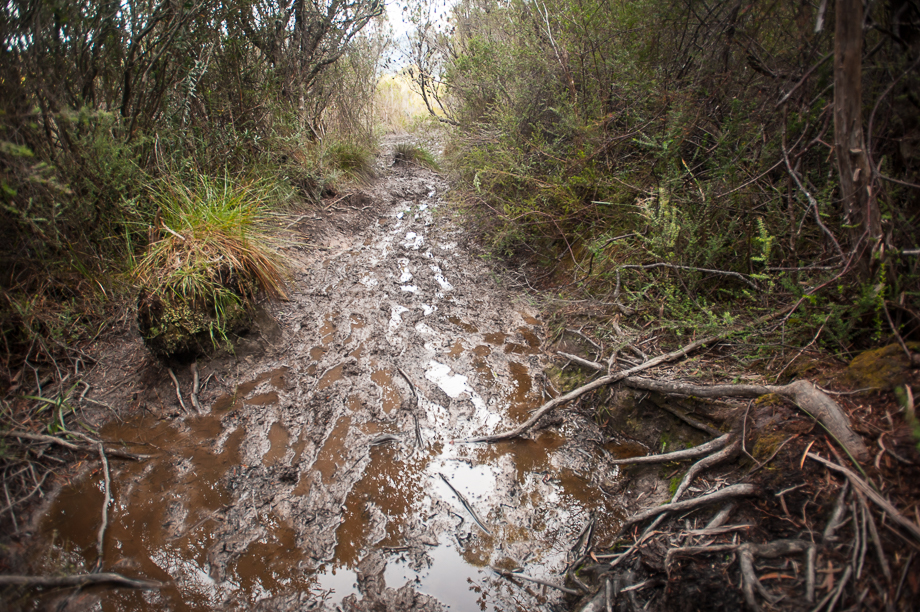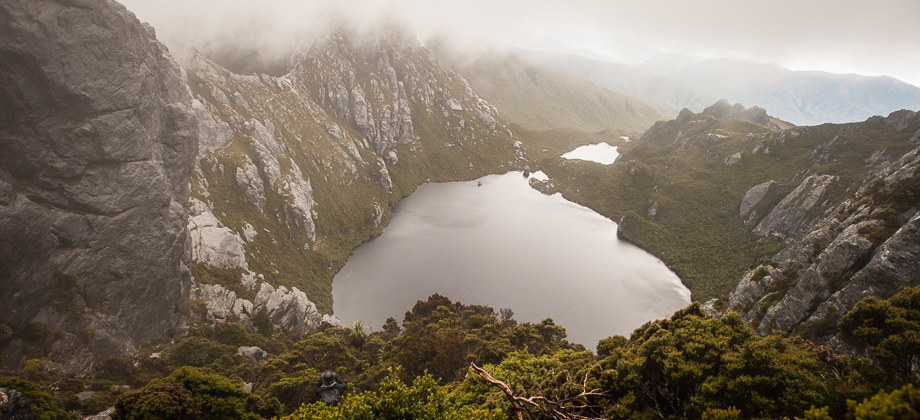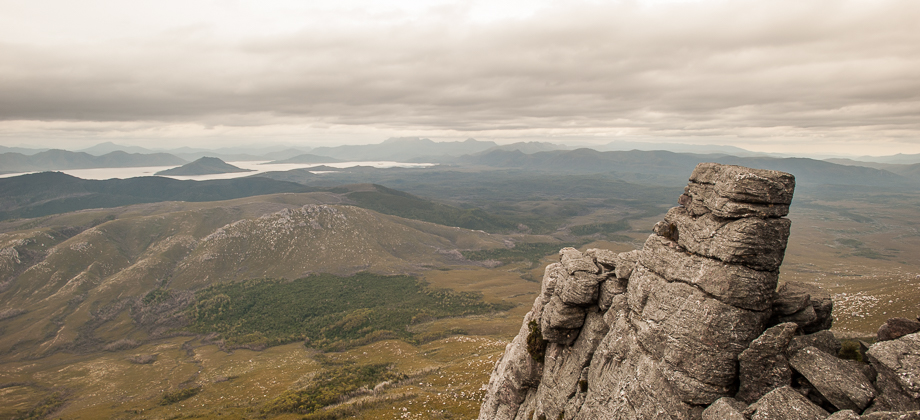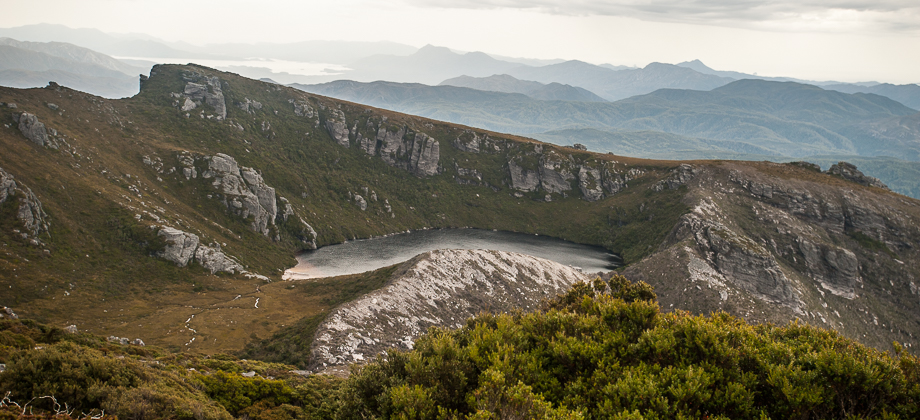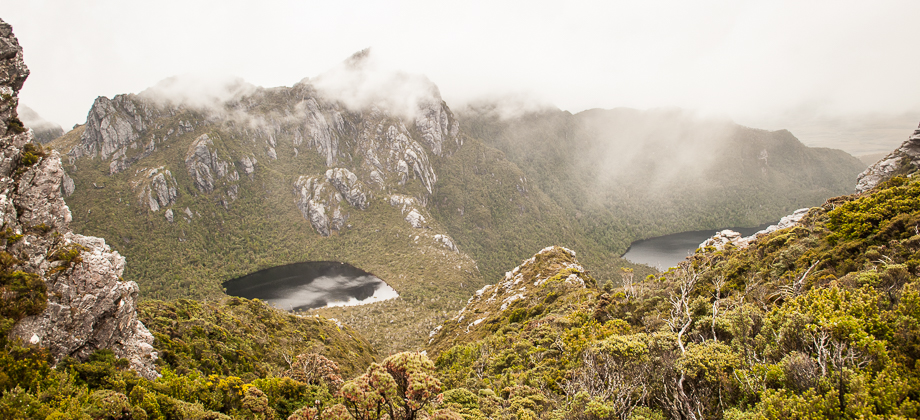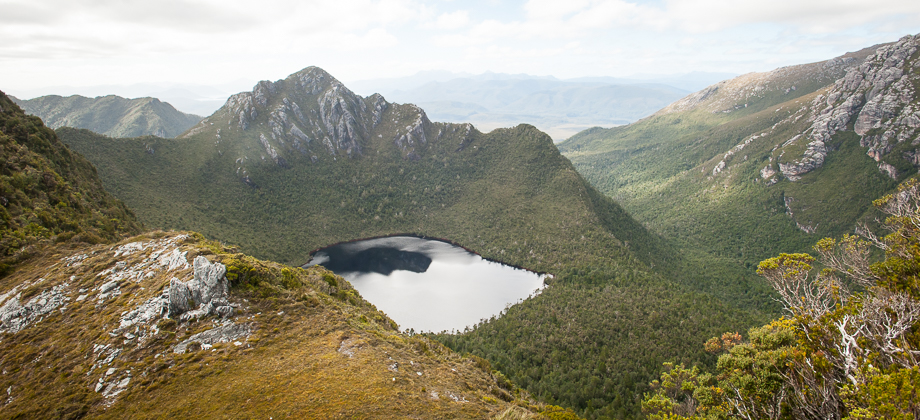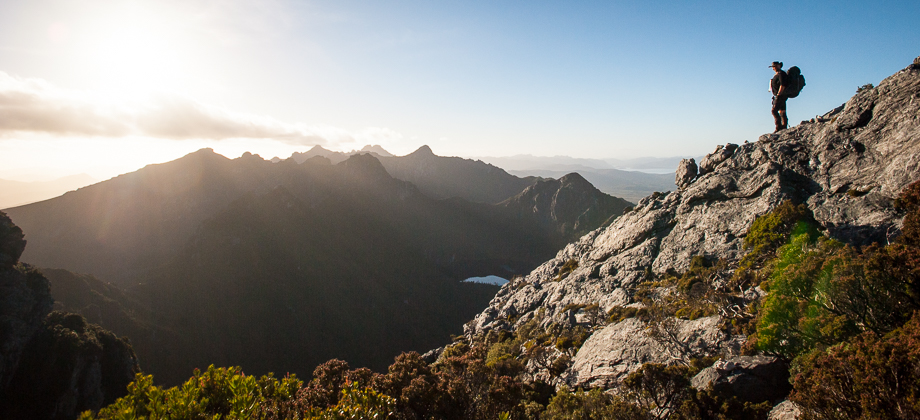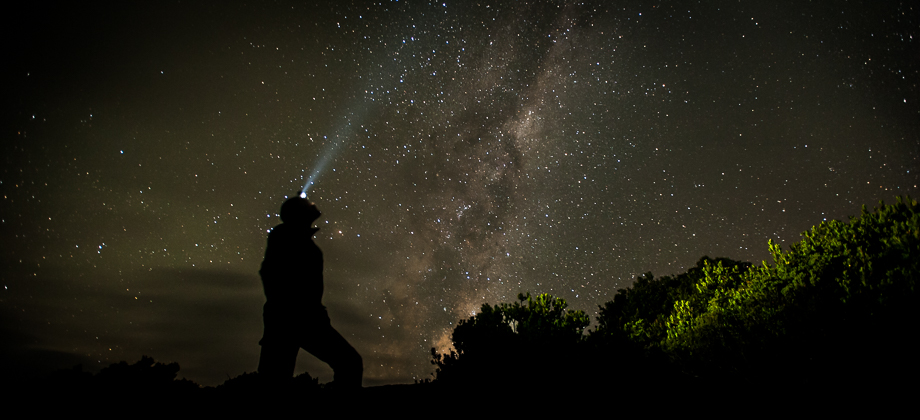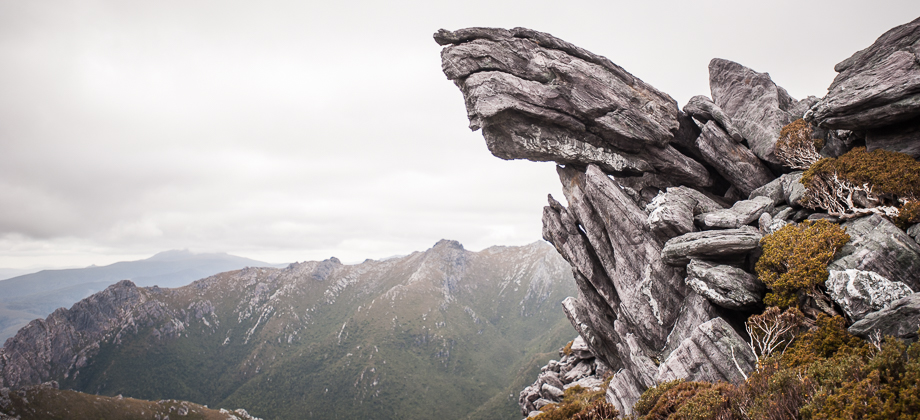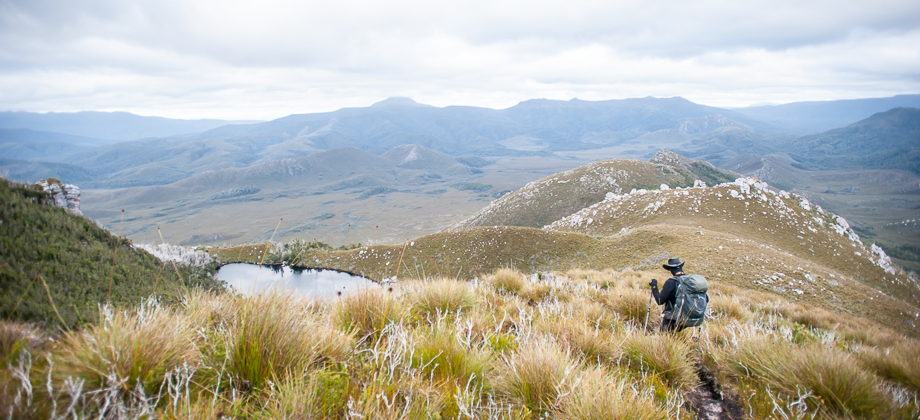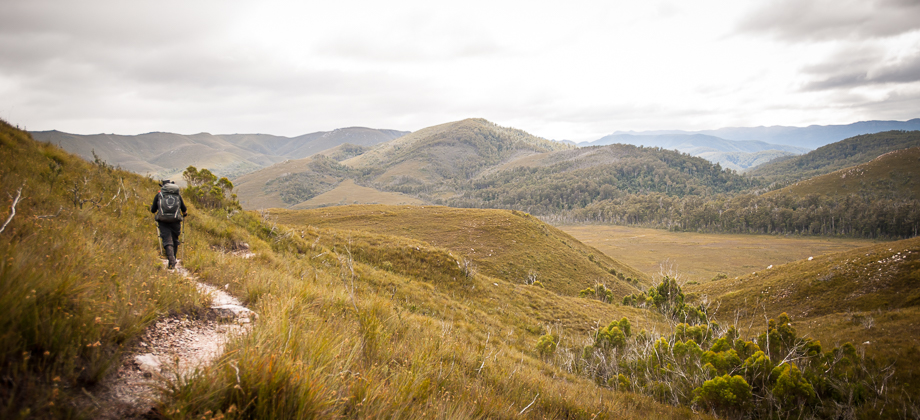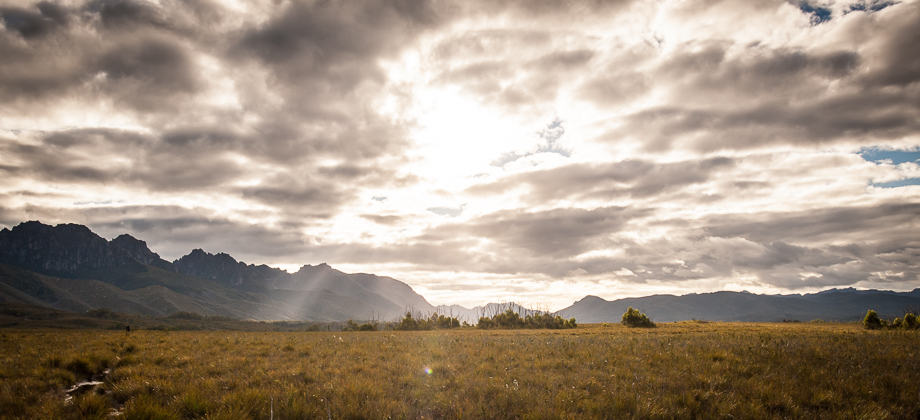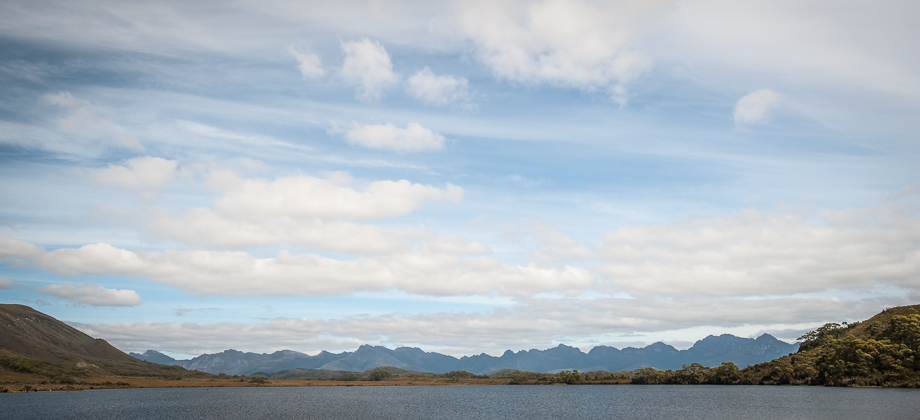Western Arthurs Day 1 : Departing Scott's Peak Dam
Western Arthur Range Index
Forest Groves

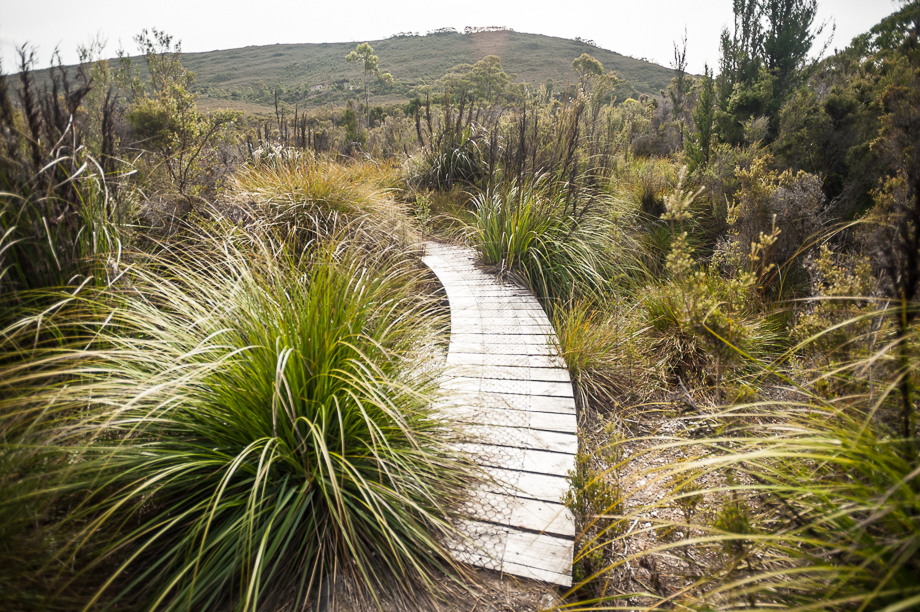 The forest ended way too soon for my liking and we were forced to emerge from the trees and onto a wooden walkway that was honeycombed with wiring that was meant to give our shoes some extra grip. This walkway soon gave way to a gravel path that meandered up and over the gentle hills that were to give way to flat buttongrass plains. I was keenly aware of the sounds that surrounded me - buzzing insects, birds that twittered in the afternoon warmth, and the soft sounds of trickling water - only because of the complete lack of wind; sounds that would not have been given a chance to reach my ears otherwise.
We entered another forest once again after approximately 300 metres, the trail winding around tufts of moss, and the shade of the forest canopy dropping the ambient temperature significantly. The trail continued on for just over a kilometre before emerging onto the plains once again. The silhouette of the range loomed ominously ahead of us, a challenging target that seemed to be fixed to the horizon. The path alternated between wooden walkways above the swampy heath, and stony gravel, but whatever the form the trail took, it was constantly flanked by button grass (Gymnoschoenus sphaerocephalus).
The forest ended way too soon for my liking and we were forced to emerge from the trees and onto a wooden walkway that was honeycombed with wiring that was meant to give our shoes some extra grip. This walkway soon gave way to a gravel path that meandered up and over the gentle hills that were to give way to flat buttongrass plains. I was keenly aware of the sounds that surrounded me - buzzing insects, birds that twittered in the afternoon warmth, and the soft sounds of trickling water - only because of the complete lack of wind; sounds that would not have been given a chance to reach my ears otherwise.
We entered another forest once again after approximately 300 metres, the trail winding around tufts of moss, and the shade of the forest canopy dropping the ambient temperature significantly. The trail continued on for just over a kilometre before emerging onto the plains once again. The silhouette of the range loomed ominously ahead of us, a challenging target that seemed to be fixed to the horizon. The path alternated between wooden walkways above the swampy heath, and stony gravel, but whatever the form the trail took, it was constantly flanked by button grass (Gymnoschoenus sphaerocephalus).
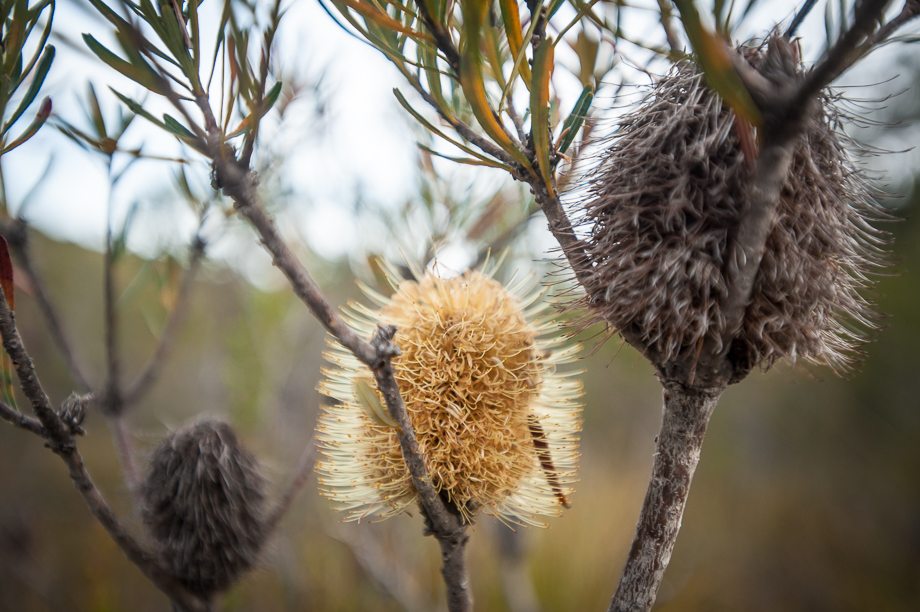
Ubiquitous Mud
The path seemed to get progressively muddier approximately four kilometres in. We entered a grove of trees again and I found myself slowed considerably by the mud as I took great effort to keep my shoes as dry as possible. I don't use hiking poles as I find that they get in the way of my photography, and the lack of which left me constantly teetering and tottering, always on the verge of losing my balance each and every time I tried to skirt around the mud patches. Damon, who had finished the South Coast Track just before tackling this hike, was very used to the Tasmanian mud by then and just walked straight through the middle of the track, seemingly oblivious to the ubiquitous mud.
